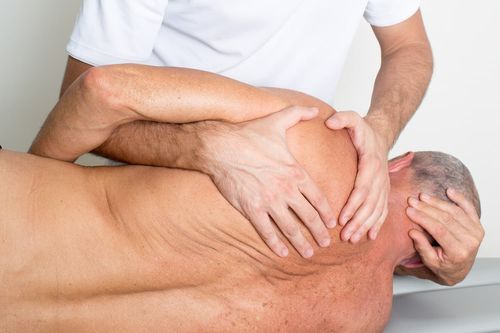What is Trigger Point Therapy?
Myofascial trigger points, or simply trigger points or muscle knots, are tight areas in the soft tissue that cause pain and aching in other parts of the body. Trigger points are commonly caused by muscle overuse, trauma, inflammation, infection and nerve pain. Trigger points can cause pain over the affected area that can radiate to other parts of the body.
Muscles with trigger points are weaker than normal, healthy muscles because they are unable to perform their normal function and move through their full range of motion. Other muscles may also be affected by these muscle knots and develop trigger points if the affected muscle is not treated right away. There are other factors that can contribute to the problem such as poor nutrition, stress and chronic illness.
Trigger point therapy is a form of massage therapy specifically designed to alleviate the pain that causes the knots by applying isolated pressure, manipulation, stretching and release on the target areas of pain. It should be remembered that the areas targeted may be different from where the client actually feels the pain.

How Does Trigger Point Therapy Work?
During a trigger point therapy, the therapist applies a firm digital pressure to locate specific points that cause pain and restricted movement. The client actively participates in the session through deep breaths to help the therapist identify the exact location and intensity of the discomfort.
Once the trigger points have been identified, the therapist employs one or more techniques to loosen the knots, including deep tissue massage, myofascial release and stretching among others. Applying constant pressure with their fingers or elbows, the therapist directs blood to the affected areas, which in turn increases the oxygen levels in the muscles to relieve the pain and increase range of motion. Trigger point therapy can be used in conjunction with other modalities such as sports massage.
What are the Benefits of Trigger Point Therapy?
Trigger point therapy eliminates pain, improves blood circulation, increases range of motion and retrains the muscles to move efficiently to prevent injuries in the future. It can help address a broad range of physical conditions such as the following:
- Neck, shoulder and knee pain
- Lower back pain
- Headaches
- Muscle pain
- Joint pain
- Sciatica
- Sports and dance-related injuries
- Carpal tunnel syndrome
- Temporomandibular joint (TMJ) disorders
- Stress and fatigue
- Tendonitis
- Menstrual cramps
- Whiplash
- Digestive issues
- Plantar fasciitis
What Can You Expect From Trigger Point Therapy?
A session of trigger point therapy usually runs for two hours, beginning with a complete assessment of the client's health and medical history, lifestyle and pain score. The therapist may ask the client to perform certain movements, to check their posture and range of motion. Once they have gathered all relevant information, the practitioner can start developing a treatment plan that includes the appropriate manipulation techniques.
Although trigger point therapy is usually performed with the client unclothed, the latter may opt to wear a pair of shorts and a loose shirt in thin, lightweight fabric so that the practitioner can palpate their muscles and apply pressure where it is needed. Massage clients are always draped appropriately to keep them warm throughout the session. The use of essential oils in this type of bodywork is optional.
Before showing up at their appointment, the client must drink plenty of water to support their body as it flushes out the toxins released from the tight muscles during the treatment session.
The amount of trigger point therapy that a person will need depends on how their body responds to the initial treatment. People with chronic conditions seek treatment twice a week, while others schedule their sessions once a month. Simply put, the frequency of one's therapy lies in the pain signals of their body.
Is Trigger Point Therapy Safe?
There is no safer and better way to address trigger points than through trigger point therapy. This form of manual therapy employs specific massage techniques to release painful bands of taut muscle tissue without causing serious side effects.




